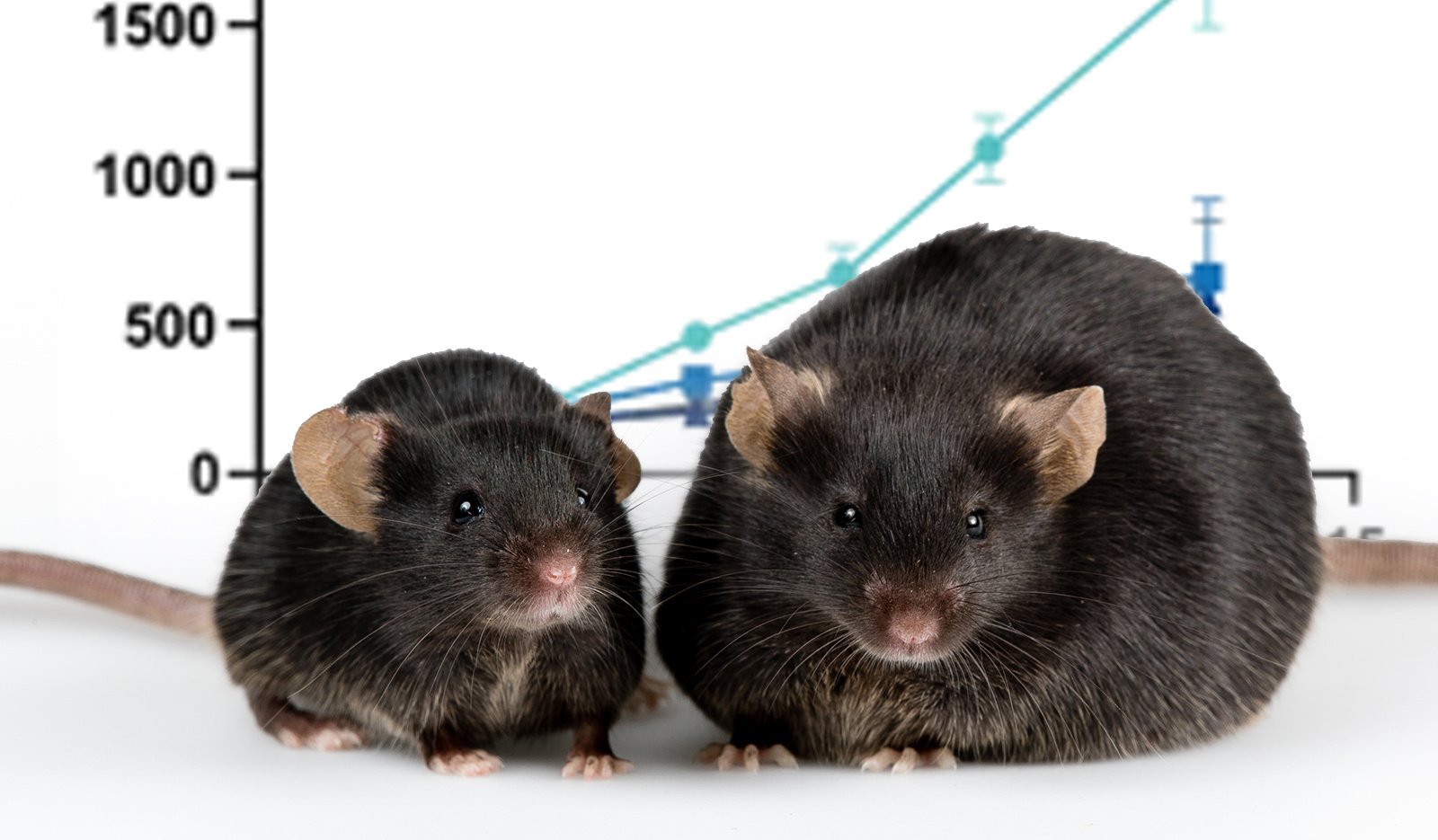Diet-induced obesity (DIO) mouse models are integral to the exploration of obesity's role in cancer etiology, offering detailed insights into the molecular and physiological mechanisms that drive tumorigenesis in an obese context. Selecting an appropriate DIO mouse strain is pivotal for obtaining robust and relevant data that can be translated into clinical settings. This blog explores the characteristics and research applications of several prominent DIO mouse strains, including C57BL/6NTac, SWR/J, A/J, KK-Ay (002468), and BTBR, to guide you in selecting the most suitable model for your specific study.
C57BL/6J: The Gold Standard in DIO Models
The C57BL/6J mouse strain is extensively utilized in DIO research due to its high susceptibility to obesity when subjected to a high-fat diet. This strain is characterized by the development of metabolic perturbations such as insulin resistance, hyperinsulinemia, and hyperglycemia, making it an excellent model for studies investigating the interplay between obesity, metabolic syndrome, and oncogenesis. The C57BL/6J strain's well-documented genetic background and widespread availability further enhance its utility in preclinical studies focused on obesity-related malignancies.
SWR/J: A Less Common, Yet Valuable Option
SWR/J mice, while less frequently employed in DIO research, present a unique model for specific investigative purposes. These mice exhibit a relatively lower baseline adiposity compared to the C57BL/6J strain but still develop obesity under high-fat diet conditions. SWR/J mice are particularly valuable in studies examining the differential impact of obesity on various tissues or in experiments where a milder obesity phenotype is preferable. This strain may be the model of choice for research requiring a nuanced approach to the study of obesity’s effects on tissue-specific cancer development.
A/J: A Model with Resistance to Obesity
In contrast to the more commonly used DIO models, A/J mice display a notable resistance to diet-induced obesity, even when exposed to a high-fat diet. This strain is particularly useful for exploring the genetic and environmental factors that confer protection against obesity, making it an ideal model for studying mechanisms of obesity resistance and their implications for cancer prevention. A/J mice offer a valuable perspective in investigations aimed at understanding why certain populations remain lean despite high-caloric intake and how these protective mechanisms might be leveraged in oncological contexts.
KK-Ay (002468): A Genetic Model for Severe Obesity
The KK-Ay (002468) mouse strain is distinguished by its genetic predisposition to severe obesity due to the presence of the Ay allele, which drives hyperphagia and consequent extreme adiposity. This strain serves as a robust model for studying the pathophysiological consequences of severe obesity, particularly in relation to obesity-associated cancers. The KK-Ay (002468) mouse is ideal for research focused on the extremes of metabolic disruption and its role in cancer progression, offering insights into how severe obesity exacerbates oncogenic processes.
BTBR: A Complex Model for Obesity and Metabolic Dysfunction
The BTBR mouse strain is characterized by a complex metabolic phenotype, encompassing obesity, insulin resistance, dyslipidemia, and hyperglycemia, which collectively make it a comprehensive model for studying the intricate relationships between obesity, metabolic dysfunction, and cancer. BTBR mice are especially valuable in research aimed at dissecting the multifaceted nature of metabolic syndrome and its contribution to tumorigenesis. This strain is well-suited for studies requiring a model that closely mimics the complexity of human metabolic disorders in the context of cancer.
Conclusion: Which Model Fits Your Study?
Selecting the optimal DIO mouse model is contingent upon the specific objectives and scientific questions of your study. Whether you require a well-characterized and widely used model like C57BL/6J, a strain resistant to obesity like A/J, or a model predisposed to severe obesity like KK-Ay (002468), each strain offers distinct advantages for elucidating the links between obesity and cancer.
For further details on integrating these models into your research, visit TD2’s DIO mouse studies.



